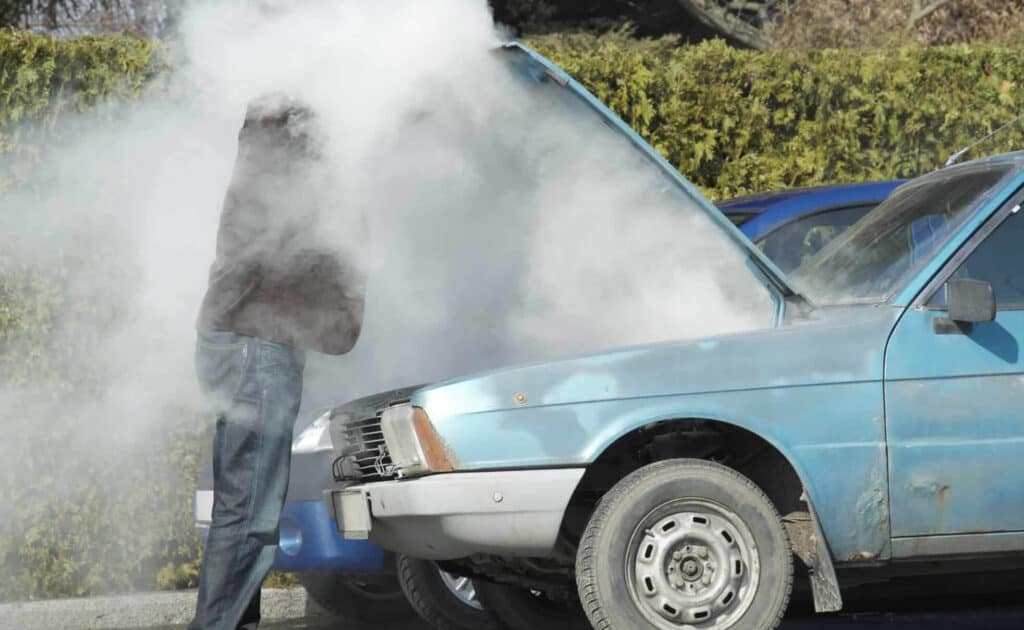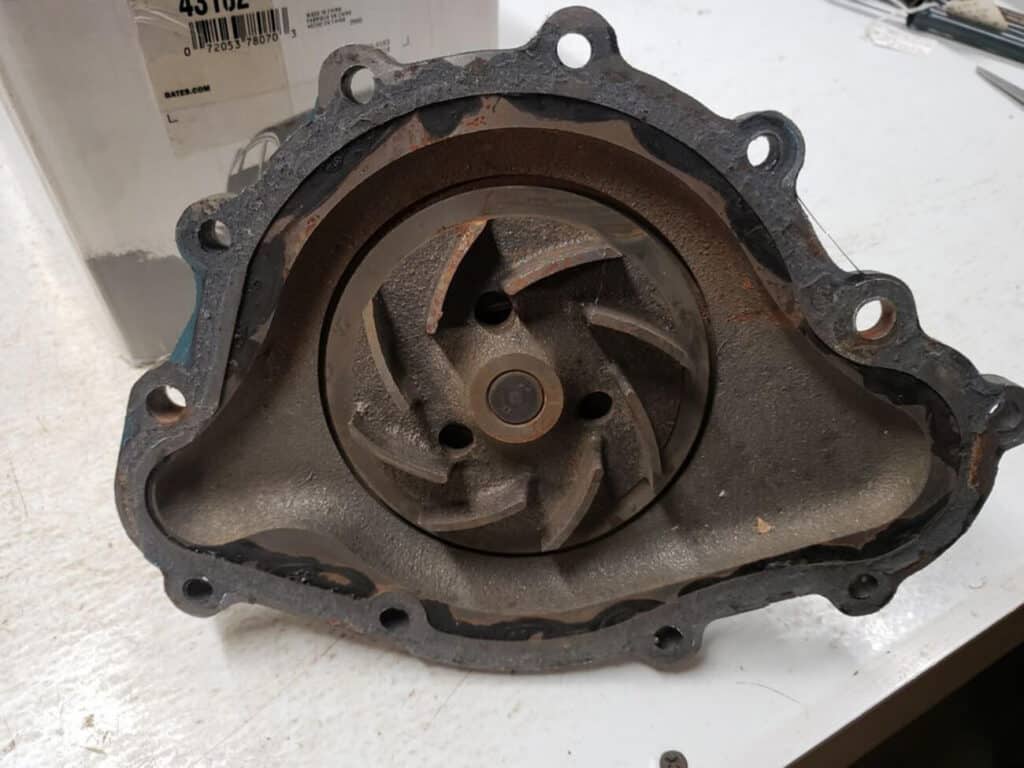The Crucial Role of the Water Pump in Your Journey
Picture this: you’re cruising down the highway, and your vehicle is running like a dream. At the heart of this smooth experience is an unsung hero – the water pump. Essential for circulating coolant through your engine to keep it at an optimal temperature, the water pump is a key player in your car’s overall health. But what happens when this critical component fails mid-journey? Let’s dive into the world of water pumps, unraveling the mysteries of their failures, and exploring what steps to take when the unexpected happens.
On-Road Crisis: What Happens When a Water Pump Fails While Driving
Imagine cruising along the highway when suddenly, your vehicle’s engine temperature gauge begins to climb rapidly towards the red zone. This is a classic sign of a water pump failure, a critical issue that needs immediate attention. The water pump is responsible for circulating coolant through the engine, keeping it at an optimal temperature. When it fails, the coolant movement halts, leading to rapid overheating of the engine.
In the initial stages of a water pump failure, you might experience reduced engine performance or see steam emanating from under the hood – classic indicators of an overheating engine. If not addressed promptly, this overheating can cause the engine to seize. This means the internal components of the engine, which are designed to move freely, could weld themselves together from excessive heat, leading to catastrophic engine failure.
Driving with an overheating engine, even for a short distance, can cause significant damage, including warped engine components and damaged cylinder heads. The longer the engine runs in this overheated state, the greater the risk and extent of the damage. It’s a situation that not only poses a threat to your vehicle’s functionality but can also lead to safety hazards – like being stranded in a potentially unsafe location or the engine catching fire.
In such scenarios, the best course of action is to safely pull over to the side of the road as soon as you can. Turning off the engine immediately to stop further heat buildup is crucial. It’s advisable to wait for the engine to cool down before attempting to open the hood. This cooling period can take at least 30 minutes. Once the engine has cooled, checking the coolant level can provide insights into the problem’s nature – though adding coolant at this stage is a temporary fix and won’t resolve a failed water pump.
This situation calls for professional assistance. If you’re equipped with roadside assistance or can contact a mobile mechanic service like Uchanics, it’s best to seek their help. They can provide a more accurate diagnosis and the necessary repairs, ensuring that your vehicle is safe to drive again. Remember, when it comes to a water pump failure, swift and informed action is key to protecting both your vehicle and your safety.

Recognizing Trouble: Signs of a Failing Water Pump
Your water pump often sends signals before completely failing. Ignoring these signs can lead to significant engine damage.
• Overheating Engine: The most obvious sign of a failing water pump is an overheating engine. The temperature gauge may spike, indicating the pump’s inability to circulate coolant effectively.
• Noise Indicators: Listen for a distinct whining or groaning noise from the engine’s front. This noise, especially noticeable during acceleration, can indicate a malfunctioning water pump.
• Coolant Leaks: Spotting puddles or drips of coolant under your vehicle, particularly near the front, is a telltale sign. These leaks often originate from a failing water pump gasket or the pump itself.
• Steam from the Engine Bay: If you see steam emanating from under the hood, it could be due to the coolant boiling over from excessive heat, often linked to water pump failure.
• Decreased Engine Performance: A failing water pump can affect your vehicle’s performance, causing it to feel sluggish or less responsive than usual.
• Rust and Corrosion: Visually inspect the water pump for signs of rust or corrosion, which can compromise its integrity and functionality.
• Vibration in the Water Pump: Unusual vibrations coming from the water pump area can indicate a loose pulley or a failing bearing within the pump.
Decision Time: Can You Keep Driving?
When your vehicle’s water pump starts showing signs of failure, a critical decision awaits you: to continue driving or not. The reality is, the moment your water pump begins to fail, your engine’s safety net starts to unravel. The water pump plays a pivotal role in circulating coolant through the engine, preventing it from overheating. Driving further with a compromised water pump is akin to walking on thin ice.
The immediate risk is overheating. Without a functioning water pump, the engine temperature can rise rapidly, leading to severe damage, including warped cylinder heads or a blown head gasket. The longevity of your engine is at stake here. Even a short distance can be detrimental under these circumstances. If the temperature gauge is climbing or you notice other signs of a failing water pump, the safest course of action is to pull over and turn off your engine. This not only safeguards your engine but also ensures your safety on the road.
Listening for Trouble: Identifying Water Pump Failure by Sound
The sounds your car makes can often be the first clue to potential problems. When it comes to a failing water pump, certain noises are telltale signs. The most common is a whining or groaning sound emanating from the front of the engine. This is often more pronounced during acceleration and can indicate that the bearings in the water pump are wearing out. These bearings are critical for the smooth operation of the pump, and their failure can lead to a complete breakdown.
Another auditory clue is a grinding sound, which suggests that the internal components of the pump are rubbing against each other abnormally. This is usually a sign of advanced wear and suggests immediate attention is required. In some cases, you might even notice a rhythmic ticking or tapping sound, indicative of a water pump pulley or belt that’s misaligned or failing.
Being attuned to these sounds can give you a significant advantage in identifying water pump issues before they escalate into more significant problems. Regular checks during servicing can often catch these sounds early, leading to simpler, less costly repairs.
Dealing with a Breakdown: Immediate Steps to Take
If your water pump fails on the road, your priority is safety. Driving further is not advisable, as it can exacerbate the problem.
• Prioritize Safety: As soon as you suspect a water pump failure, find a safe location to pull over. It’s crucial to avoid busy highways or blind curves where stopping could be hazardous.
• Engine Off: Turn off the engine immediately to stop further overheating. Continuing to drive with an overheated engine can lead to more severe damage, including a blown head gasket or a warped engine block.
• Wait for Cooling: Do not attempt to open the radiator cap or the hood immediately if the engine is overheated. Wait until the engine has sufficiently cooled down to prevent burns from hot steam or fluids.
• Assess the Situation: If you have basic mechanical knowledge, check the coolant level (when safe to do so) and inspect for visible leaks. This can provide useful information to the mechanic.
• Call for Assistance: Contact roadside assistance or a reliable mobile mechanic service. Explain the symptoms clearly for them to prepare for the potential issues.
• Avoid DIY Fixes: Unless you have the expertise, avoid trying to fix the issue yourself on the side of the road, as this could lead to further damage.
• Arrange for Towing if Necessary: If the issue is severe and cannot be resolved on the spot, arrange for your vehicle to be towed to a nearby garage for proper diagnosis and repair.
• Stay Safe: While waiting for help, stay inside your vehicle if you’re on a busy road. Keep your emergency lights on to alert other drivers.

Preventing Repeat Failures: Understanding and Addressing Root Causes
Water pump failures can be frustrating, especially if they happen repeatedly. To break this cycle, it’s crucial to address the underlying causes. The first step is ensuring your vehicle receives regular maintenance. This includes checking the coolant level and the overall health of the cooling system. Low coolant levels or using the wrong type of coolant can accelerate the wear and tear on the water pump.
Another common root cause of repeated failures is an issue within the cooling system itself, such as a clogged radiator or a malfunctioning thermostat. These components can cause the engine to run hotter than usual, putting additional strain on the water pump. Corrosion within the cooling system can also lead to premature pump failure. This is often due to a lack of coolant changes or using a coolant that’s not compatible with your vehicle.
In some cases, a faulty installation or a subpar quality water pump can be to blame for repeat failures. Ensuring that any replacement is of high quality and correctly installed is key to preventing future issues.
By understanding and addressing these root causes, you can significantly reduce the likelihood of future water pump failures and maintain the overall health of your vehicle’s cooling system.
Repairing the Damage: Potential Repairs and Cost Breakdown
Replacement is Key: When it comes to a failed water pump, the most common solution is replacement. Repairing or refurbishing a water pump is often not cost-effective or reliable in the long term.
Cost Factors: The cost of replacing a water pump can vary significantly. Factors influencing the price include:
– Vehicle Make and Model: Different vehicles require different types of water pumps, and the cost can vary accordingly. High-end or luxury vehicles typically have more expensive parts.
– Labor Costs: The complexity of the replacement process affects labor costs. Some vehicles have water pumps that are easily accessible, while others may require significant disassembly, driving up labor charges.
– Associated Repairs: Sometimes, water pump failure can cause or stem from other issues in the cooling system, like a damaged thermostat or radiator problems. Addressing these can add to the overall cost.
– Part Quality: Opting for OEM (Original Equipment Manufacturer) parts usually costs more than aftermarket options, but they often offer better quality and warranty coverage.
Typical Price Range: You can expect to pay anywhere from $300 to $1,000 for a water pump replacement. The lower end of the spectrum generally covers most common vehicles with accessible pumps and aftermarket parts. The higher end includes luxury vehicles, OEM parts, and more labor-intensive replacements.
Preventive Savings: Proactively addressing water pump issues, like replacing a pump showing wear signs before it fails, can be more cost-effective. This proactive approach can prevent collateral damage to the engine and other cooling system components, which can be much more expensive to repair.
Long-Term Benefits: Investing in a quality replacement and ensuring a proper installation can extend the lifespan of the new pump and help avoid repeat failures. This not only saves money in the long run but also ensures the reliability and safety of your vehicle.
Navigating Water Pump Issues with Confidence
Understanding your vehicle’s water pump and recognizing the early signs of failure are key to navigating these issues with confidence. Regular maintenance and prompt action at the first sign of trouble can save you from the inconvenience and danger of a roadside breakdown. For expert assistance and peace of mind, remember that Uchanics offers mobile mechanic services in Canada, ensuring that help is always within reach for your vehicle’s needs.
